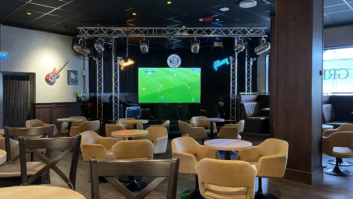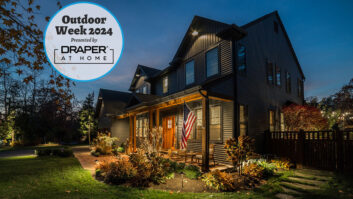Hundreds of gadgets and services, all promising to make lives at home easier and more comfortable, will be launched at the Consumer Electronics Show this week in Las Vegas, but a new survey of average consumers says that simple integration of new technologies is what is wanted most.
According to the 2008 State of the Connected Home Market Study, a comprehensive smart home market study from the group that used to be called the Internet Home Alliance, the one thing consumers want most in a connected home is convergence.
Funded by Whirlpool, Bell Canada, Cisco Systems, Direct Energy, Hewlett-Packard Company, Legrand, Leviton Manufacturing Co. Inc. Microsoft Corporation, Procter & Gamble, the Z-Wave Alliance, and Zensys, the 2008 State of the Connected Home Market Study was conducted in April and May 2008 by CABA’s Connected Home Research Council, a non-profit research group.
According to the study, the number of US online households that consider the idea of a connected home–a home where independent systems, like lighting, security and entertainment, are linked and centrally controlled–“definitely appealing” has held steady since 2005. However, more people than ever before find it appealing and product convergence is the biggest opportunity for growth.
“This report confirms our understanding that consumers do not want to ‘automate their homes’ as much as they want to use connected home technologies to solve life’s small problems, save themselves time, energy and money and provide peace of mind,” said Mary Miller, director of marketing, Zensys, makers of the Z-wave wireless chip and a study participant. “Our mission, as an industry, is to provide consumers with seamless and interoperable solutions.”
“What consumers want most is an easy, seamless way to integrate their smart home devices—their mobile device, their TV, their appliances, you name it,” said Carol Priefert, senior manager, Whirlpool Corporation, the study’s lead participant.
For instance, smart phone users report positive responses from using mobile devices in the kitchen, not just for communicating, but for scheduling, managing grocery lists and listening to audio. By providing consumers with real-life benefits via their cell phones to other smart home solutions, demand should increase like never before.
Another opportunity exists among those living in states where energy costs are high and utility costs could be controlled with careful monitoring since they report being open to the idea of a smart home.
“With volatile energy costs and an unpredictable economy, people have never been more interested in finding ways to use energy in their homes more efficiently and effectively to save money,” said David Dollihite, chair of the Connected Home Research Council and vice president of product development for Direct Energy, a North American retailer of energy and related services that took part in the study. “Our study reveals that energy management in the home is a rising priority for consumers and may be one of the best opportunities for addressing the North America strategic concern of energy independence. The study goes further to recognize the need for cross industry collaboration in delivering a consumer-friendly solution to integrated energy management within the connected home.”
In addition to convergence and energy monitoring, consumers are interested in specific product solutions such as a wireless memory card for digital cameras (so their camera can ‘talk’ to their computer and printer) and a personal multimedia player that offers a range of video capabilities including ‘download your favorite shows’.
“As highlighted by this market study, the proliferation of IP devices in the home and increasing consumption of digital media creates abundant opportunities for the broader connected home ecosystem to work together to deliver the seamless experience that consumers are demanding,” said Tony Wan, director of marketing, Cisco.
Following are some of the study’s other key findings:
- 87 percent of those surveyed have broadband Internet at home
- 58 percent have two or more computers at home
- 43 percent have a home network that allows computers and other devices in the home to communicate with one another
- Top computer activities are checking news (72 percent) and instant messaging (49 percent)
- 90 percent of online households in the U.S. say they have used a computer recently for entertainment purposes–playing computer games, watching videos, listening to music, burning CDs, etc.
- 34 percent report engaging in online social networking via sites like Facebook
- People are cutting the cord: 12 percent of consumers in the U.S. are using cell phones and 8% are using VoIP (voice communication over the Internet) rather than landlines for home service
- 57 percent of online households use cell phones in the kitchen on a regular basis
- Audio activity is climbing thanks to portable devices and computers but multi-room home audio installations lack traction
- 51 percent of workers who use a computer regularly at work feel they have some or complete freedom to choose from where they work, up from 43 percent in 2005 and working outside the office is up significantly since 2005, from 29 percent to 38 percent.
“This is one of the most important and comprehensive recent studies into the smart home space and we applaud these leading companies for participating,” said Ronald J. Zimmer, president and CEO of CABA , the not-for-profit North American technology industry association of which the Connected Home Research Council is a part. “These companies could certainly conduct this type of research independently, but they all recognize—and the research confirms—that collaboration and conversation in this space are essential.”
The 2008 State of the Connected Home Market Study was conducted by Zanthus, a high-tech market research firm, to investigate consumer attitudes and behaviors with regard to the connected home.







